
The history of our cutlery

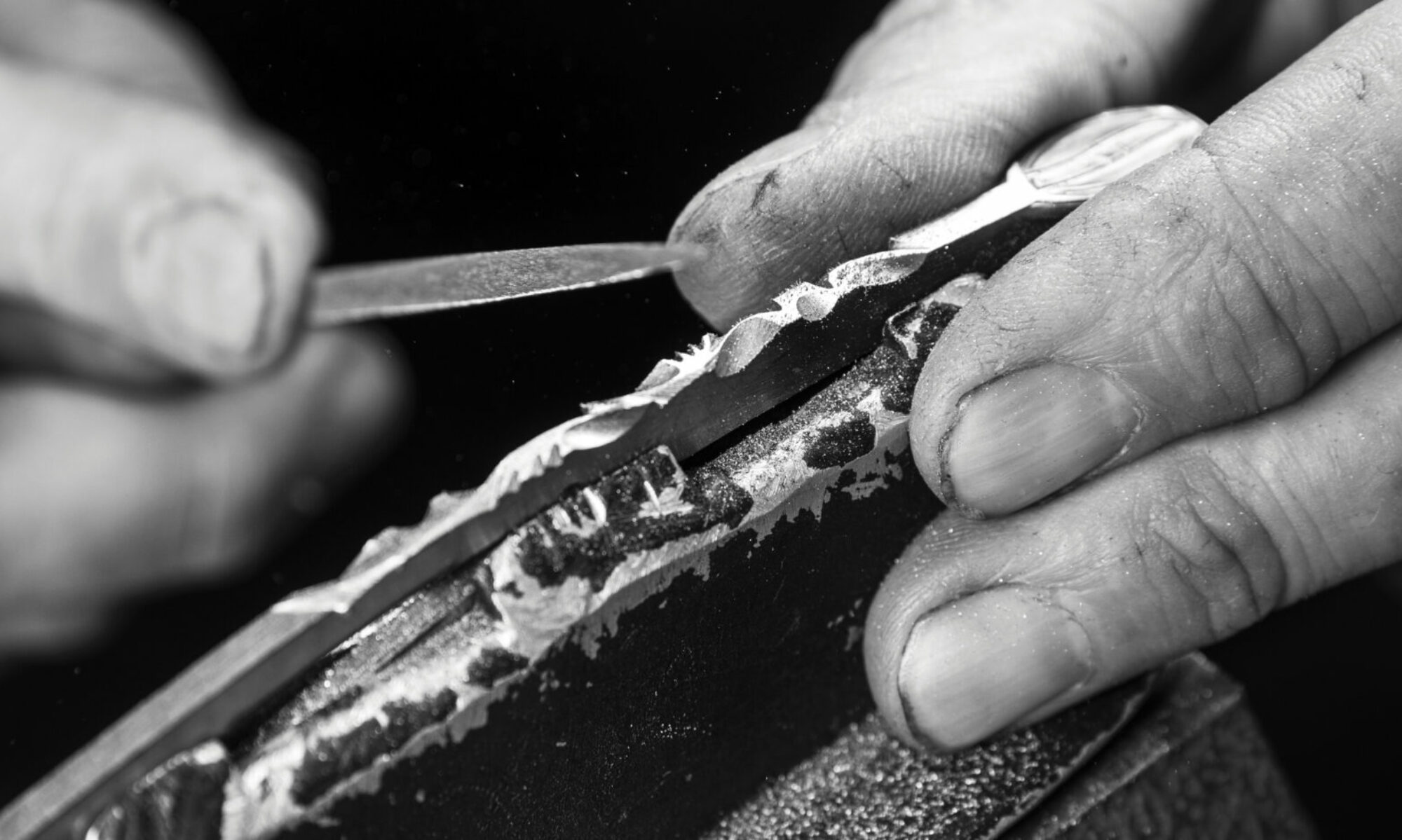
Manufacture de coutellerie fine depuis 1929

You may be one of the lucky ones who will visit Corsica and its splendid landscapes this summer. If you don’t know it, you will quickly discover why this region is called the “Isle of Beauty”. And it is a destination of choice for knife lovers!
Corsica has been a land of knives since antiquity and its cutlery has become a real tradition.
The traditional fixed knife is first of all a dagger “à la génoise”, heritage of the partly Italian history of Corsica.
Like many rural regions, the knife was first and foremost a tool used by the peasants for daily work, or for offensive/defensive purposes. Some models of Corsican knives have become famous over time, but the list is far from exhaustive because the island of beauty is full of small utility knives! They are easily recognizable because they often bear the name of their geographical origin, in Corsican language of course.
Nowadays, they continue their history with new models that combine tradition and modernity. And we can affirm that there is not “one” but “many” Corsican knives!
This is probably the most famous knife from Corsica. The Vendetta is particularly recognizable with its very particular shape: a long and pointed blade, a wide bolster and a rounded handle.
“Vendetta” is a word of Italian origin meaning “revenge”, the word would refer to “private justice”, especially between two families (who often used knives to settle their account…)
Legend has it that at a time when firearms were not commonplace, this knife was used in the fields to slaughter animals as well as to restore a family’s honor. And it was not uncommon to see knives decorated with formulas as murderous as their blades. A detail that also contributed to the fame of the object.
The Vendetta knife is, in a way, well named! Unlike other more “traditional” knives (such as the Pialincu or the Rondinara), Vendettas are not inspired by and do not take their name from the knives of peasants in difficult lands, nor from the fishermen of the coastal ports of the island of Beauty.
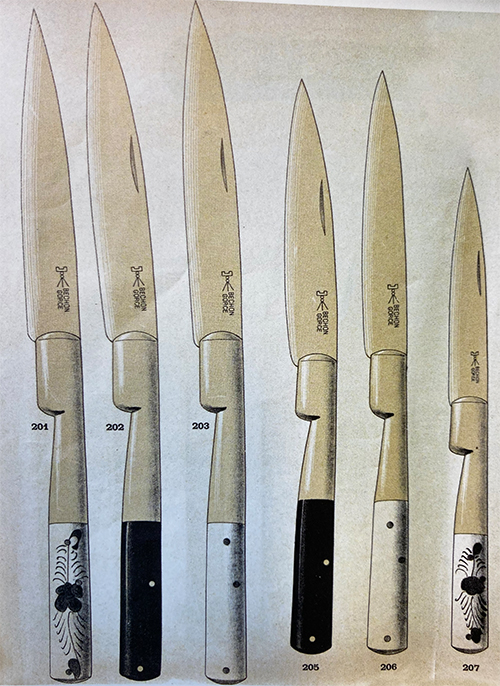
The truth is a little less glamorous. The Corsican Vendetta is what we call in the jargon, a neo-regional knife. It is a tourist knife, a very bad word, we grant you. And unfortunately, like many famous models, there is a (too) large quantity of blades imported from China or Pakistan on the markets, even in Corsica. For the 20th century buyer, a vendetta bought on the island of beauty was actually… thiernoise! The creation of this knife is linked to the publication of Colomba, a very successful novel by Prosper Mérimée in 1840. The work will have the merit of launching the fashion of the novels-feuilletons. On the menu, love affairs, bloody skirmishes and… revenge of course! But the reality in Corsica is much less romantic, the shepherds used much more basic knives made by the local cutlers, often in ram’s horn, an easy material to get.
The Laguiole knife is probably the most famous and recognized French knife, in France and internationally.
But before the Laguiole, which had its first moment of glory around 1890, Aubrac had its very specific knife called the “Capuchadou” or “Capujadou”. Its name comes from the Romanic verb capusar which means to scrape a piece of wood.
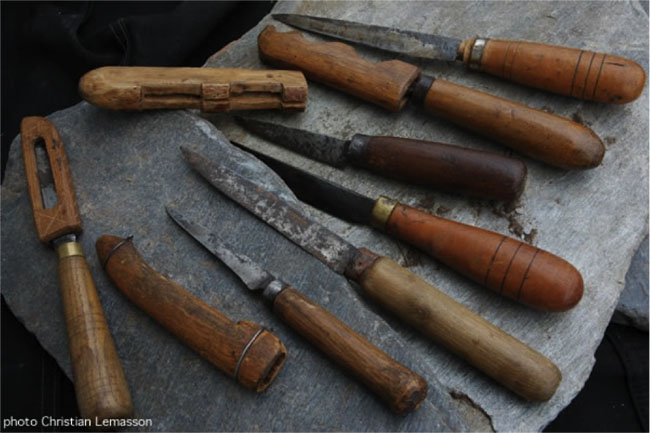
Life in Aubrac is difficult, peasants live poorly and are often owners of only small plots and/or a few animals… The buronniers often left the region in autumn for the capital to find winter employment. It was also common for groups of “buronniers” to leave for Catalonia (often to become pit sawyers). The peasants would then return to their homeland in early spring.
It is in this context that the Capuchadou was born. It probably originates from the area around Rodez, and was once made by these peasants with the materials they had on hand.
The Capuchadou (or Capujadou) is therefore since the dawn of time the knife of these peasants of Rouergue, Auvergne and Aubrac. It is a rustic knife, with a thick and pointed blade. This rustic knife did not close yet. Whether for eating, slaughtering, taking care of animals, or for self-defense, the Capuchadou was an indispensable daily tool for these workers of the land. Indeed, it was sometimes necessary to pierce the swollen belly of cows suffering from weathering (to save their lives, as they risked choking to death following the swelling) and the returns from the fair were not always without attacks from robbers and other mischief-makers. It was therefore traditionally slipped naked into the sleeve, into the pants, into the boot or stored in a wooden case.
Lieutadès is a small village in the Cantal at 900 m altitude. It is located on the first slopes of Aubrac, in Auvergne. Its inhabitants have a particularity : they are called the Capujadous. This nickname comes from an Occitan verb which means “to cut” (pieces of wood).
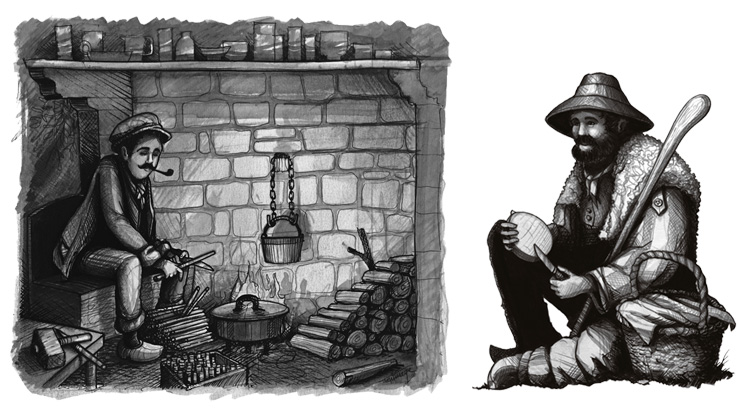
In the past, during the long winter evenings, they used their “capujadou” to cut the countless pegs that fixed the lauzes, the enormous stone slabs that are assembled to form the roofs. They cut so many of these pegs that the nickname has stuck to them.
The “new generation” Capuchadou knife is now made in our cutlery shop, you can also buy it online: www.capuchadou.fr.
A knife is above all a utilitarian object, which can even be qualified as a tool in its own right. It has been used for centuries, whatever its model, to assist farmers in their daily tasks. Very quickly, this initially rudimentary tool was adorned with more and more sumptuous decorations. If many knife lovers are familiar with Damascus blades and other handles made of rare and precious materials, the work known as “Guillochage” is often put aside.
Guillochage is a technique of engraving in hollow, which allows to decorate blades, springs and plates by removing material with a file or a chisel. Most often, the guilloche is done in a symmetrical way and consists of lines and curves intertwined. It is done with files and chisels of different sizes and shapes on steel for the springs, but it is a technique applicable to wood or ivory.
If guilloche is a classic work in cutlery, the term is also known in watchmaking. High-end watches often have a dial decorated with patterns composed of straight lines that play with reflections and light. Beyond the aesthetic aspect, the guilloche also gives the dial a better readability. As in cutlery, the guillochage of watches was initially done manually, but the invention of specialized machines (the guilloche lathe) was to revolutionize this industry. A great name in jewelry, Pierre-Karl Fabergé, popularized the technique with his eggs decorated with enamelled guilloche.
But whether in watchmaking or cutlery, the difficulty for the craftsman is to maintain symmetrical and regular patterns!
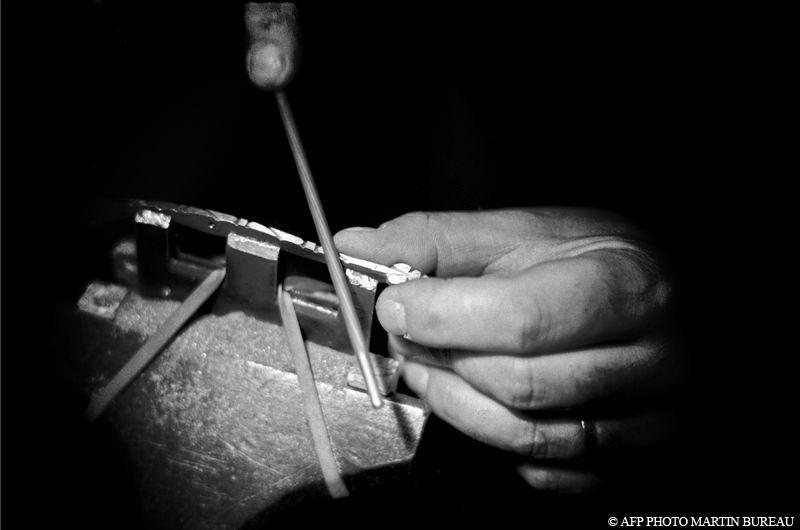
In traditional cutlery workshops like ours, this work is done by hand. The guilloche work does not concern only one part of the knife, the plates, the back of the blade and the inside of the spring can be chiseled, this range of knives is often superior in price range since the manual work is even more consequent. Quality guilloche work is done freehand to achieve a finely crafted decoration. It has the added advantage of being unique!
The work of guillochage can be more or less delicate, depending on the chosen motif or the size of the knife. A “fine” guilloche will be the most beautiful effect on a knife with exceptional materials such as a damascus steel blade and coral handle for example. It is then close to a jeweler’s work.
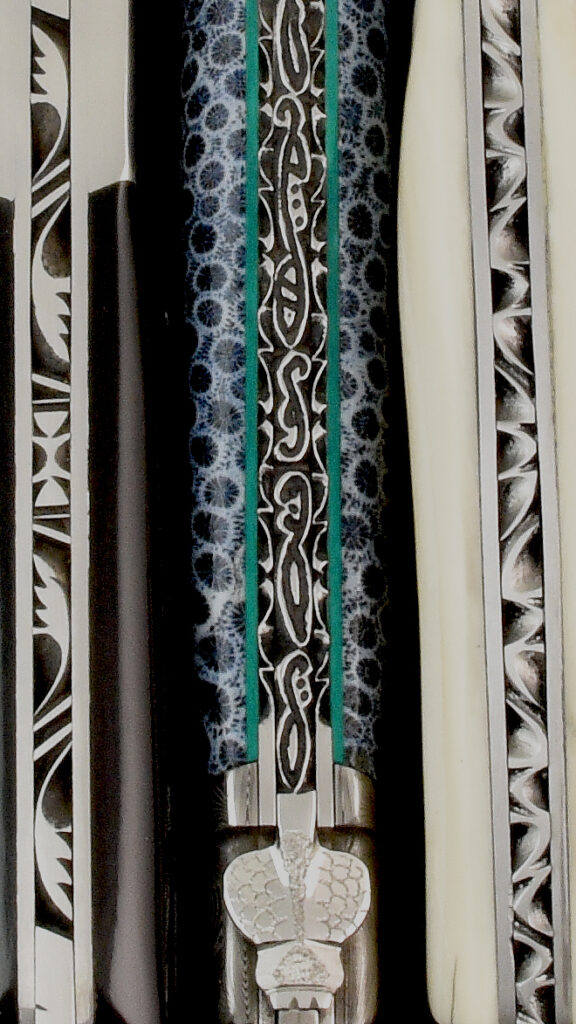
Welcome to the blog of cutlery Fontenille-Pataud. Of course we will talk about knives and cutlery, but we will also discuss many other themes.
We hope you enjoy reading this blog !
As you know, find all our knives on www.fontenille-pataud.com .